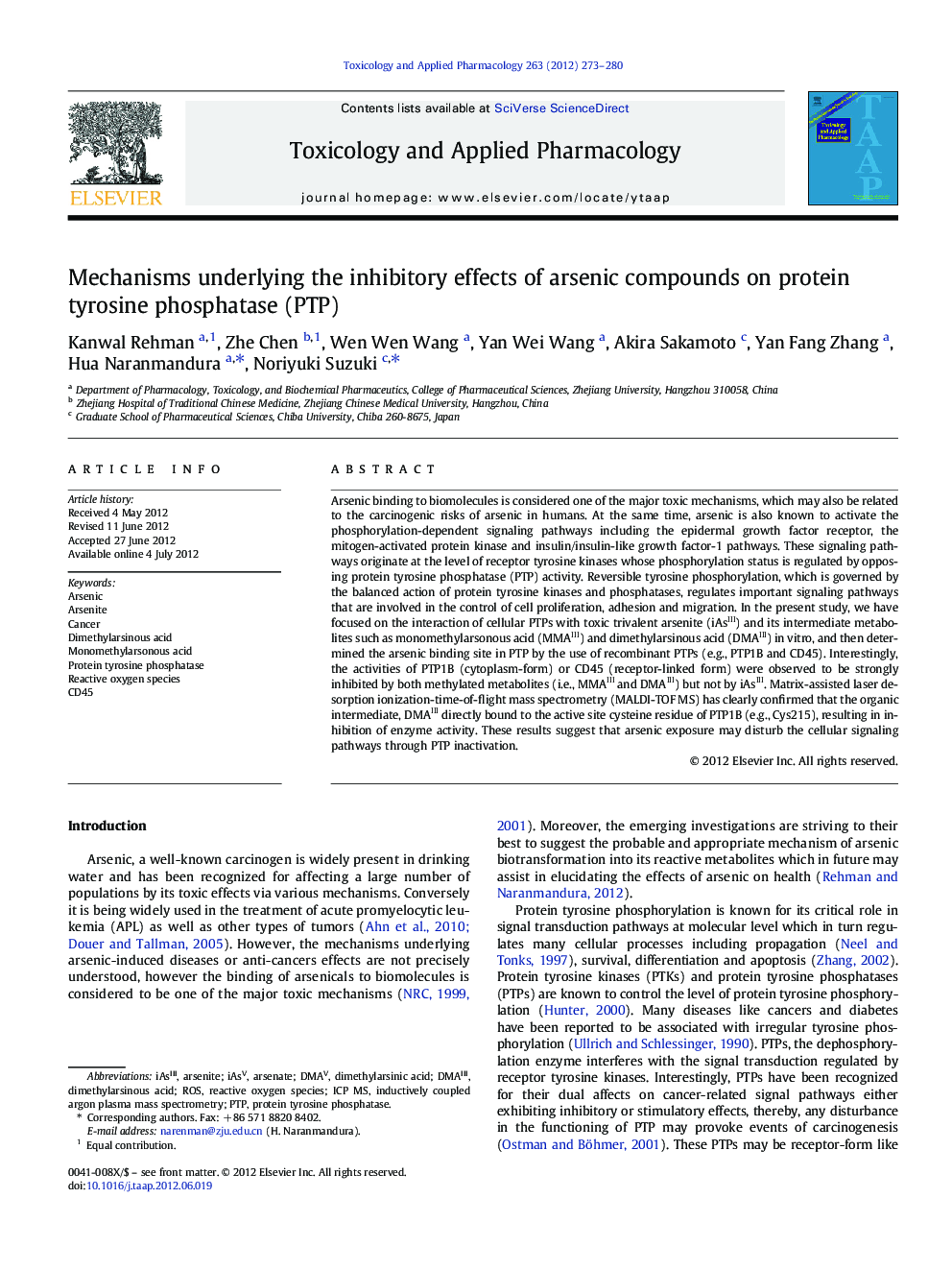| کد مقاله | کد نشریه | سال انتشار | مقاله انگلیسی | نسخه تمام متن |
|---|---|---|---|---|
| 2568987 | 1128502 | 2012 | 8 صفحه PDF | دانلود رایگان |

Arsenic binding to biomolecules is considered one of the major toxic mechanisms, which may also be related to the carcinogenic risks of arsenic in humans. At the same time, arsenic is also known to activate the phosphorylation-dependent signaling pathways including the epidermal growth factor receptor, the mitogen-activated protein kinase and insulin/insulin-like growth factor-1 pathways. These signaling pathways originate at the level of receptor tyrosine kinases whose phosphorylation status is regulated by opposing protein tyrosine phosphatase (PTP) activity. Reversible tyrosine phosphorylation, which is governed by the balanced action of protein tyrosine kinases and phosphatases, regulates important signaling pathways that are involved in the control of cell proliferation, adhesion and migration. In the present study, we have focused on the interaction of cellular PTPs with toxic trivalent arsenite (iAsIII) and its intermediate metabolites such as monomethylarsonous acid (MMAIII) and dimethylarsinous acid (DMAIII) in vitro, and then determined the arsenic binding site in PTP by the use of recombinant PTPs (e.g., PTP1B and CD45). Interestingly, the activities of PTP1B (cytoplasm-form) or CD45 (receptor-linked form) were observed to be strongly inhibited by both methylated metabolites (i.e., MMAIII and DMAIII) but not by iAsIII. Matrix-assisted laser desorption ionization-time-of-flight mass spectrometry (MALDI-TOF MS) has clearly confirmed that the organic intermediate, DMAIII directly bound to the active site cysteine residue of PTP1B (e.g., Cys215), resulting in inhibition of enzyme activity. These results suggest that arsenic exposure may disturb the cellular signaling pathways through PTP inactivation.
Figure optionsDownload high-quality image (120 K)Download as PowerPoint slideHighlights
► This study focused on the interaction of PTPs with trivalent arsenicals in vitro.
► We for the first time confirmed that DMAIII strongly inhibited activity of PTP1B.
► DMAIII directly bound to PTP1B, resulting in inhibition of enzyme activity.
Journal: Toxicology and Applied Pharmacology - Volume 263, Issue 3, 15 September 2012, Pages 273–280